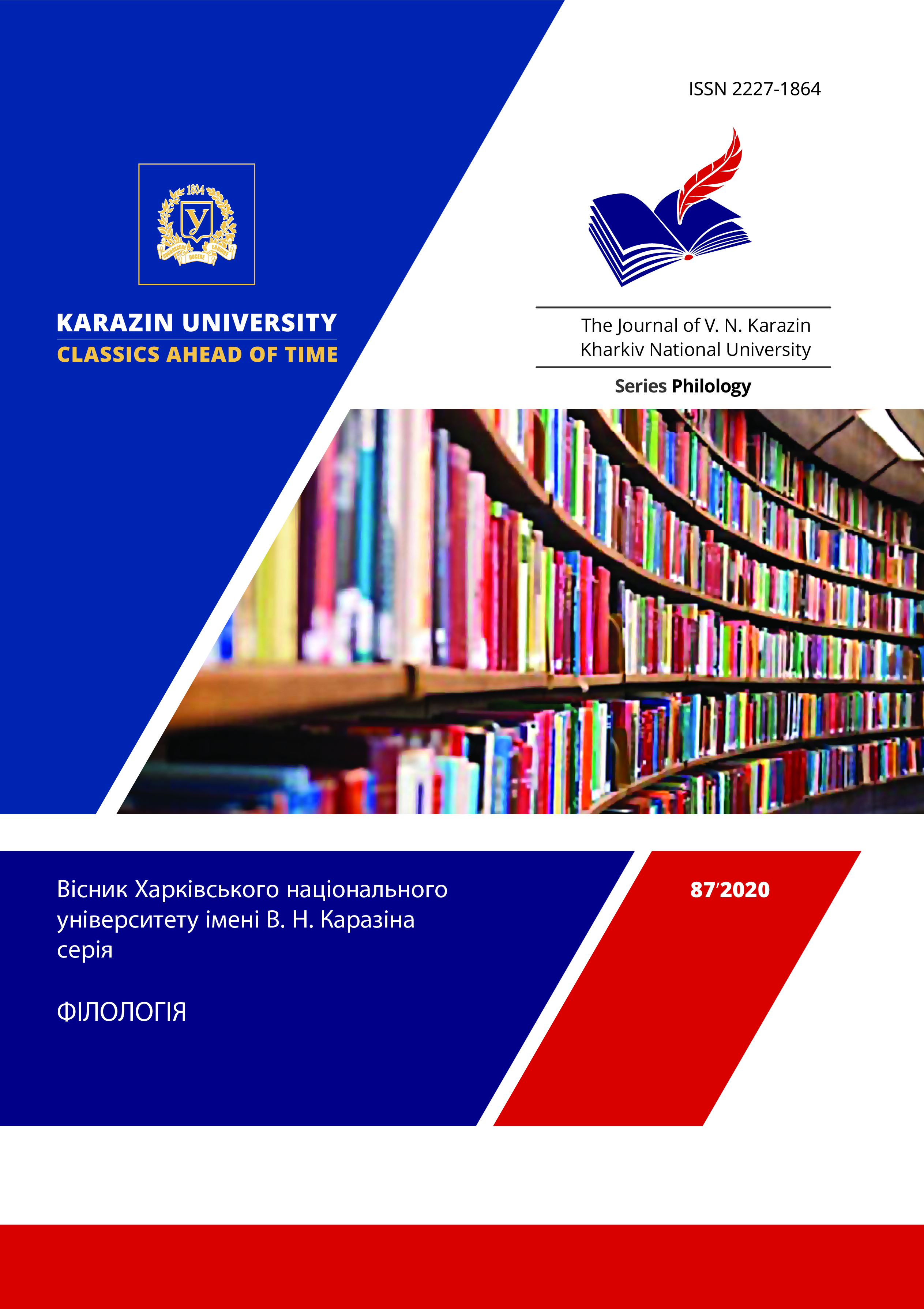Лексико-тематична парадигма чорного кольору в ідіостилі Е. М. Ремарка
Анотація
Мета дослідження полягала в структуруванні словосполук з елементом «schwarz» за лексико-тематичними групами та їх детальній характеристиці, що уможливило визначення всіх семантичних варіантів чорного кольору в ідіостилі Е. М. Ремарка та допомогло виявити відтінки їх значення у процесі декодування читачем творів видатного літератора.
Реалізація поставлених завдань дослідження передбачала інтегративне застосування загальнонаукових методів (опису, індукції, дедукції), так само як аналізу словникових дефініцій, класифікацію та моделювання фактичного матеріалу.
Лексико-тематична парадигма чорного кольору в ідіостилі Е. М. Ремарка представлена словосполученнями на позначення зовнішності людини, одягу та взуття; рослинного і тваринного світу, навколишнього середовища, природних явищ; предметів побуту; будівельних споруд, транспорту; світлотіней, форм і фігур; заборонених, протизаконних дій; опису душевного та фізичного стану людини. Перша група виявилась найчисельнішою, тоді як група, в якій зібрано вирази, що передають важкий душевний або фізичний стан людини, представлена найменшою кількістю сполучень, котрі складають палітру чорного кольору в творах Е. М. Ремарка. Найактивніше (кожен четвертий прикметник на позначення кольору) аналізований колоронім вживається автором у творі «Люби ближнього свого».
Детальний аналіз дискурсу письменника показує, що кольоровий домінант «schwarz» є важливим елементом творчого методу автора. Він використовується не з метою знебарвлення дійсності, він зафарбовує її у темний колір, бере участь у формуванні емоційної складової тексту, стимулює асоціативну діяльність читача. За допомогою лексичних одиниць на позначення чорного кольору Ремарк ідентифікує свого героя, вербалізує його портрет, наповнює його смислом і глибиною. Чорний колір тут – рефлексія на екзистенційні проблеми, що виходять на перший план для героїв Ремарка.
Завантаження
Посилання
Bazima, B. A. (2005). Psihologija cveta: teorija i praktika. [Color psychology: theory and practice]. Moskva: Rech' [in Russian].
Beljanin, V. P. (2003). Psiholingvistika [Psycholinguistic]. Moskva: Flinta [in Russian].
Vezhbicka, A. (1996). Jazyk. Kul'tura. Poznanie [Semantics, culture and cognition]. Moskva: Russkie slovari [in Russian].
Kantemir, S. O. (2003). Syntahmatychni ta paradyhmatychni vlastyvosti prykmetnykiv koloru v nimetskii movi [The syntagmatic and paragmatic characte of colour terms in the German]. Extended abstract of Candidate’s thesis. Odesa [in Ukrainian].
Kovalska, I. V. (2001). Kolorystyka yak perekladoznavcha problema (na materiali ukrainskykh i anhlomovnykh khudozhnikh tekstiv. (Avtoref. dys. kand. filol. nauk) [Colour terms as a problem of Translation Studies (based on Ukrainian and Anglophone fiction)]. Extended abstract of Candidate’s thesis. Kyiv [in Ukrainian].
Remarque, E. M. (1998). Arc de Triomphe. Köln: Verlag Kiepenheuer & Witsch [in German].
Remarque, E. M. (1993). Der Feind. Köln: Verlag Kiepenheuer & Witsch [in German].
Remarque, E. M. (1989). Der schwarze Obelisk. Köln: Verlag Kiepenheuer & Witsch. [in German].
Remarque, E. M. (1966). Die Nacht von Lissabon. Köln: Verlag Deutscher Bücherbund [in German].
Remarque, E. M. (1991). Drei Kameraden. Köln: Verlag Kiepenheuer & Witsch. [in German].
Remarque, E. M. (1971). Im Westen nichts Neues. Köln: Verlag Kiepenheuer & Witsch [in German].
Remarque, E. M. (1991). Liebe deinen Nächsten. Köln: Verlag Kiepenheuer & Witsch [in German].
Remarque, E. M. (1989). Zeit zu leben und Zeit zu sterben. Köln: Verlag Kiepenheuer & Witsch [in German].
Schwarz. Retrieved from http://www.dwds.de/?view=1&qu=schwarz [in German] (data zvernennia: 20.10.2020).




